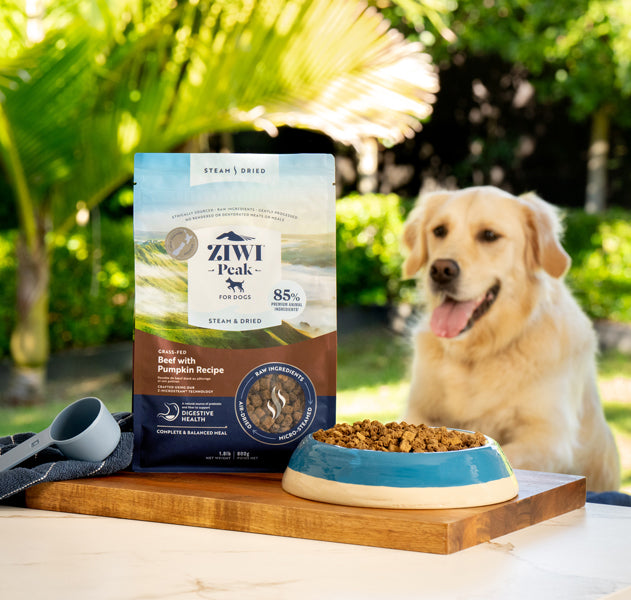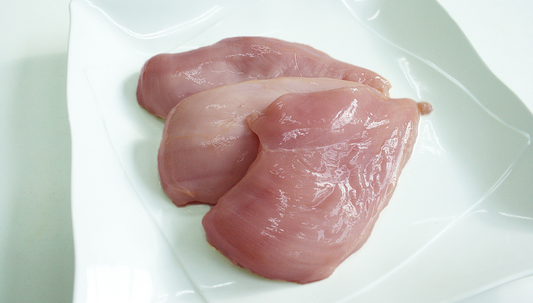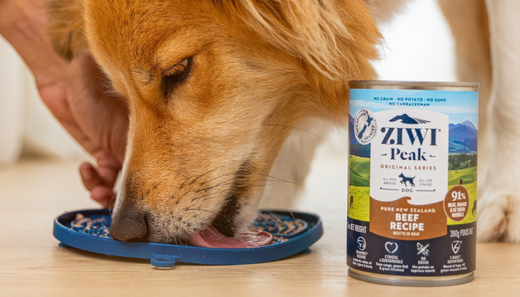 If you're a dog owner, you're likely familiar with the excitement your dog shows when it's time for a treat. Pet parents are exploring healthier, natural alternatives to treats to incorporate into their dog's diet.
If you're a dog owner, you're likely familiar with the excitement your dog shows when it's time for a treat. Pet parents are exploring healthier, natural alternatives to treats to incorporate into their dog's diet.
Fruit has become a popular choice amongst pet owners for a quick and easy treat and more specifically, honeydew melon has become a popular consideration.
But can dogs eat honeydew? Is it a safe and healthy choice? Let’s explore the health benefits of honeydew for dogs along with some practical feeding tips!
Can dogs have honeydew?
Honeydew melon is safe for dogs in moderation. This refreshing fruit is rich in nutrients and can be a healthy treat, especially during the warmer months when you’re looking for a cooling snack to share with your dog.
Is honeydew good for dogs?
Honeydew melon isn't just delicious, it’s also packed with nutrients that can support your dog's health. Here are some of the benefits of feeding honeydew to your dog:
- Hydration boost: Honeydew melon is made up of about 90% water, making it an excellent hydrating snack for your dog. It can help replenish lost fluids and keeps your dog hydrated, especially after physical activity.
- Rich in vitamins: Honeydew is a good source of Vitamin C, an antioxidant that can support your dog's immune system, fight off free radicals, and improve their skin and coat. It also contains small amounts of Vitamin A and B-vitamins, which are essential in maintaining vision health and overall metabolism.
- Fiber for digestion: The fiber in honeydew melon can support your dog's digestive health by regulating bowel movements and promoting healthy digestion.
- Low in calories: Honeydew is low in calories and fat, making it a great option for overweight dogs or those on a calorie-controlled diet. As a low-calorie snack, it can satisfy your dog’s need to snack without the added guilt.
Serving honeydew for dogs
While honeydew is safe for dogs, it’s important to prepare it properly and serve it in appropriate amounts. Always consult your vet before making any significant changes to your pet’s diet or introducing new foods.
Feeding your dog high-quality, balanced nutrition is key to ensuring their long-term health. While honeydew melon can be a delightful treat, it’s important to remember that a complete, well-rounded diet is essential for your dog’s overall wellness.
ZIWI recipes are known for their premium, Air-dried recipes made with ethically-sourced ingredients that feature up to 96% real meat, organs, and bone.
They also contain an average of three times more real meat and 50% less carbs than fresh-frozen diets on the market. The high meat and seafood content provides essential proteins, omega-3 fatty acids, vitamins, and minerals to support your dog’s health and wellness.
Pairing any ZIWI recipe for dogs with a small piece of honeydew as a treat can provide a well-rounded snack that boosts hydration and adds a touch of natural sweetness to your dog’s diet.
You can also use honeydew as an occasional treat in between meals or as a healthy topper to your dog’s meal to add extra hydration and variety to their diet.
Here are some tips for safely feeding honeydew to your dog:
- Remove the seeds and rind: Never feed your dog the seeds or rind of the melon. The seeds could pose a choking hazard or cause intestinal blockage, and the rind can be tough for your dog to digest. Only offer the soft, fleshy inner part of the melon.
- Cut into small pieces: Cutting honeydew into bite-sized chunks is the best way to serve it. This prevents your dog from choking and makes it easier for them to chew and digest. For smaller dogs, you may want to further dice it into smaller pieces.
- Moderation is key: While honeydew is healthy, it should only be given as an occasional treat and not as a primary food source. Too much fruit can upset your dog's stomach due to its sugar content. Therefore, it’s best to keep honeydew treats to around 10% of your dog’s daily calorie intake.
- Serve fresh or frozen: For an extra refreshing treat, try freezing small pieces of honeydew. This makes for a cooling snack that can be especially enjoyable on warm days.
Honeydew melon health and benefits and serving suggestions FAQs
1. Can dogs eat honeydew melon?
Yes, dogs can eat honeydew melon in moderation. It’s a safe and healthy treat for dogs when prepared correctly, without the rind or seeds, and offered in small, manageable pieces.
2. What are the health benefits of honeydew for dogs?
Honeydew melon offers several health benefits that provide hydration, vitamins and antioxidants, fiber, and is low in calories.
3. How should I serve honeydew to my dog?
To safely serve honeydew to your dog:
- Remove the seeds and rind: Only feed the fleshy inner part of the melon to avoid choking or digestive issues.
- Cut into small, bite-sized pieces
- Serve in moderation: Treat honeydew as an occasional snack, not a regular part of their diet, to avoid upset stomachs or excessive sugar intake.
- Freeze and serve small pieces of honeydew: for an extra refreshing treat.
4. Can honeydew be fed to dogs with sensitive stomachs?
Yes, honeydew can be a good option for dogs with sensitive stomachs, as it is easy to digest. However, always introduce it slowly and in small amounts to ensure it doesn’t upset their stomach.
5. Can I mix honeydew with my dog’s ZIWI recipes?
Yes, honeydew can be a great addition to our recipes such as our Air-dried recipes for dogs and you can use it as a topping or a side treat. Our range of recipes provide a complete and balanced diet, while honeydew can be a healthy, hydrating addition served in moderation.
6. Can I feed my dog other types of melons?
Yes, other melons like cantaloupe and watermelon are generally safe for dogs in moderation. However, always remove seeds and rinds, and introduce any new fruit slowly to ensure it agrees with your dog’s digestive system.
For more information on our products and feeding advice, visit our website or contact our dedicated consumer care team.









